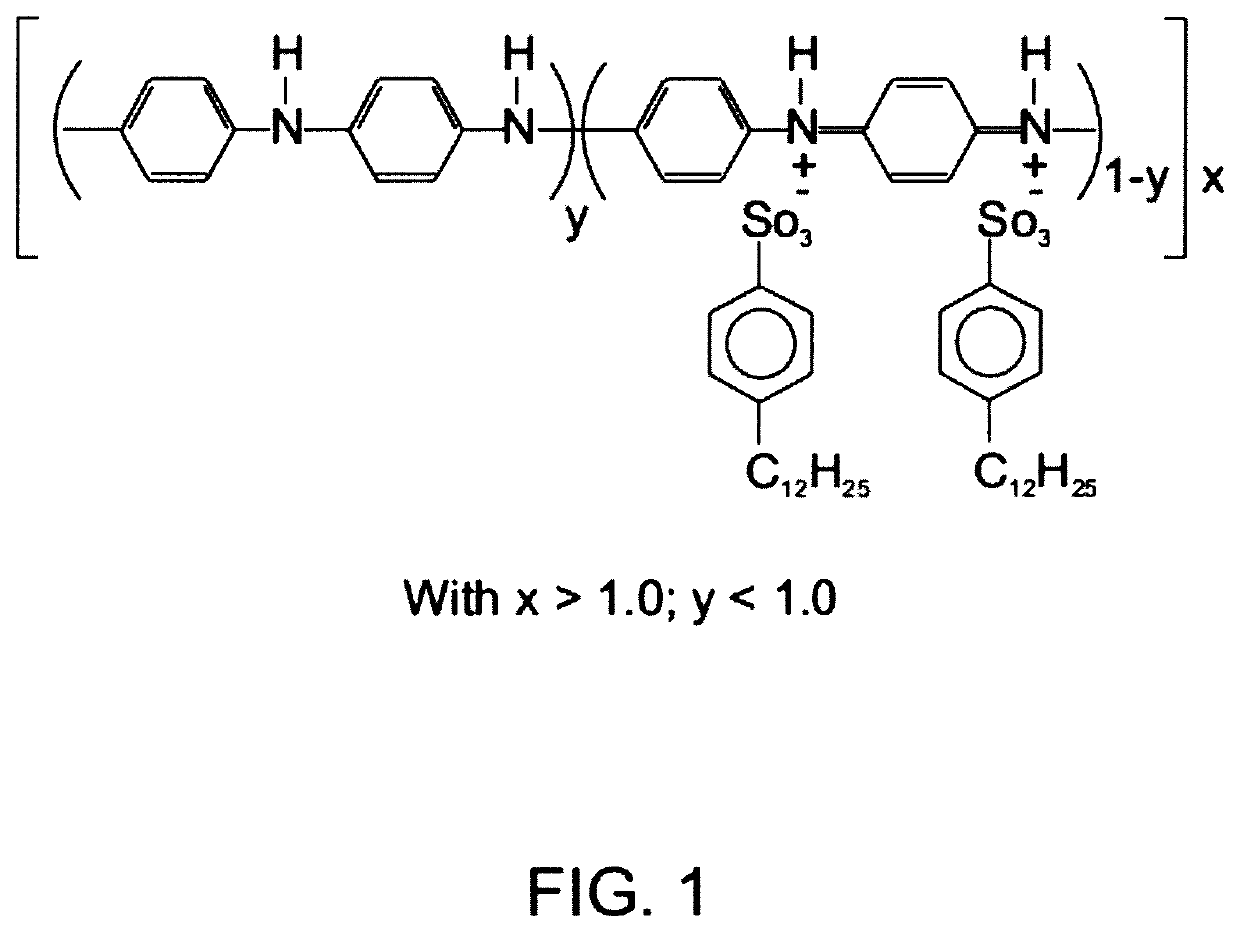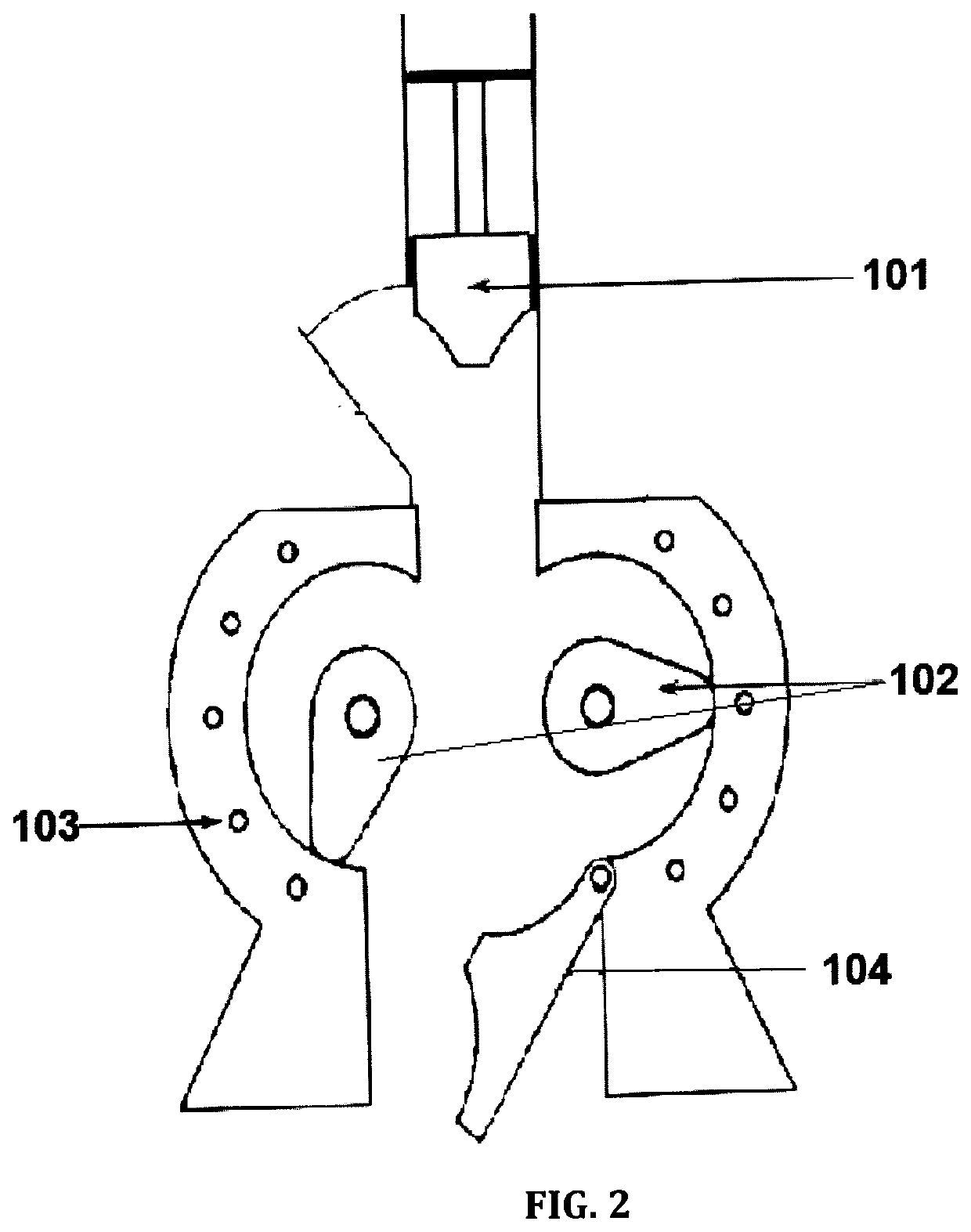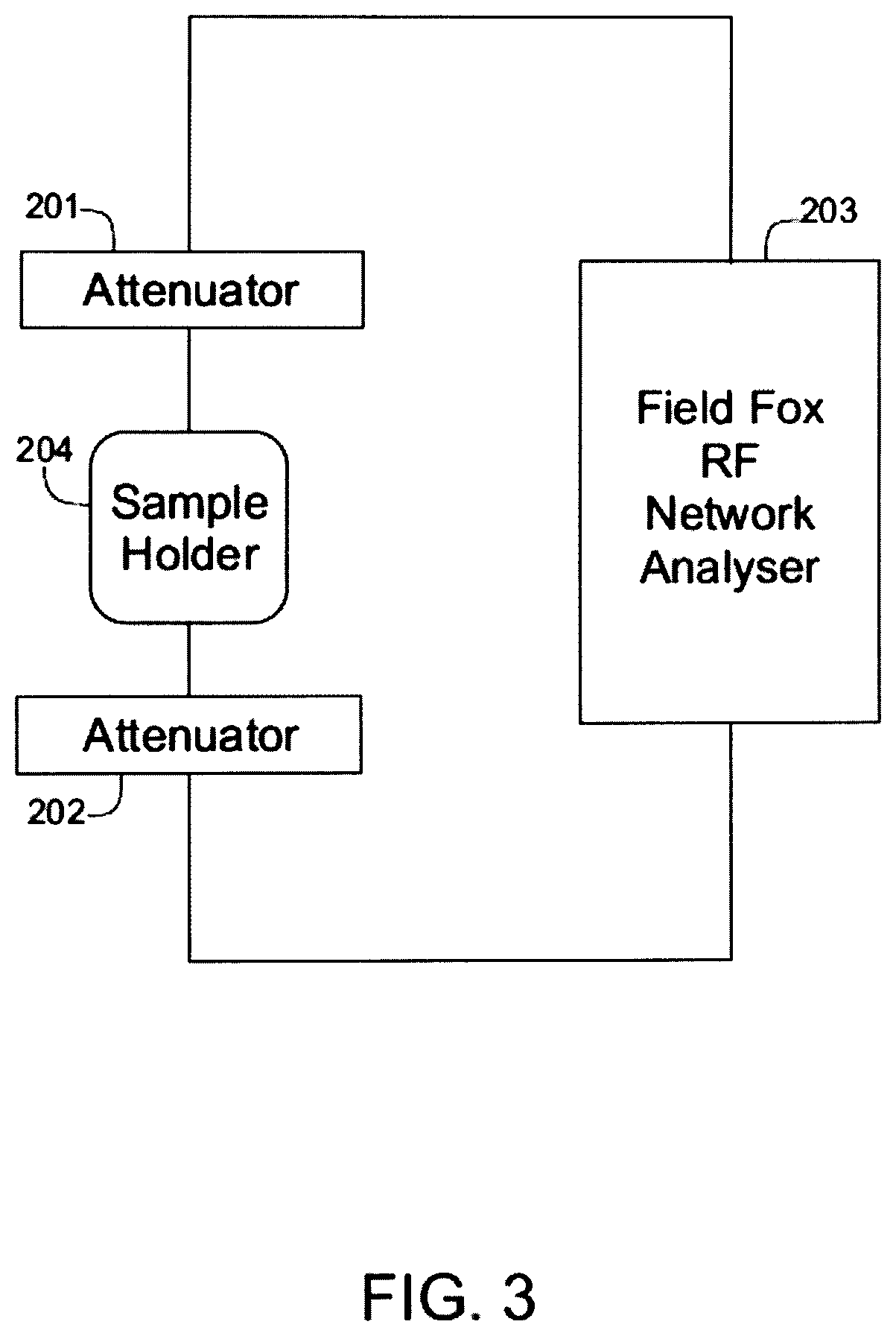Natural rubber based electrically conductive thermoplastic vulcanisates and the device for manufacturing the same
a technology of thermoplastic vulcanisates and electrically conductive thermoplastics, which is applied in the direction of magnetic/electric field screening, electrical equipment, etc., can solve the problems of limited literature on the use of natural rubber based tpvs for the preparation of conductive materials, and achieve good electromagnetic interference shielding and good tensile strength
- Summary
- Abstract
- Description
- Claims
- Application Information
AI Technical Summary
Benefits of technology
Problems solved by technology
Method used
Image
Examples
example 4
lity of Peroxide-Vulcanised TPVs
[0053]Recyclability in terms of basic tensile properties, electrical conductivities and EMI SE of all peroxide-vulcanised TPV samples was assessed. Each peroxide-vulcanised TPV sample was stripped and reground by using a granulator (Plascare PH-500SS). Granulates of these recycled samples were re-moulded by using the same injection moulding machine with the same conditions as for the virgin samples. All these processes were repeated up to four times for each sample.
[0054]All peroxide-vulcanised TPVs were reprocessed and examples of the obtained results for TPVs with 30.0 wt % and 50.0 wt % of PAni.DBSA contents are summarised in Table 5. All peroxide-vulcanised TPVs could be reprocessed without major difficulty. The reprocessing does not seem to affect the electrical properties and EMI shielding effectiveness of all these TPVs. Their electrical conductivities and EMI shielding effectiveness values remained almost constant throughout the four cycles of...
example 5
ubber Based Electrically Conductive TPVs
[0057]Three types of TPV based on Hevea Brasiliensis Natural Rubber [NR], poly(butadiene-co-acrylonitrile) [NBR] and ethylene-propylene-diene rubber [EPDM] were prepared respectively according to the method as described in the patent draft. Both NBR and EPDM are common kinds of synthetic rubber used to prepare a TPV. However, only TPV based on NR was added with a compatibiliser, i.e. hydroquinone (at 1.0 wt % content) in order to assess its effect on the resulted TPV's properties. Apart from this, amount for the conductive filler (PAni.DBSA) loading for all these TPVs was fixed at 30.0 wt %.
[0058]Three kinds of test were performed for all these prepared TPVs, i.e.:[0059](1) Electrical conductivity, determined using the guarded 2-probes method;[0060](2) Tensile properties, i.e. non-aged tensile strength and elongation at break [EB] %, conducted according to BS ISO 37-2005 procedures;[0061](3) EMI shielding effectiveness, determined by using a F...
example 6
ubber Based Electrically Conductive Thermoplastic Vulcanisates
[0065]Two types of Hevea Brasiliensis Natural Rubber [NR] based TPV were prepared respectively according to the method as described in this patent application. First TPV is based on carbon black filler (grade N220) and second TPV is based on sulfonic acid doped polyaniline [PAni.DBSA] as the filler.
[0066]Two different types of test were performed for all these TPVs, i.e.:[0067]1. Electrical conductivity, determined using the guarded 2-probes method;[0068]2. EMI shielding effectiveness, determined by using a FieldFox 10 GHz RF Vector Network Analyser
[0069]Results for all these tests are summarised in Tables 7 and 8 respectively.
[0070]
TABLE 7Electrical Conductivities and EMI Shielding Effectiveness for TPV based on Carbon Black (N220)Filler ElectricalEMI shieldingcontent (wt %)conductivities (S / cm)effectiveness (dB) 5.02.5 × 10−10110.07.3 × 10−9 320.06.4 × 10−8 530.01.9 × 10−6 640.07.1 × 10−3 8
[0071]
TABLE 8Electrical Conduc...
PUM
| Property | Measurement | Unit |
|---|---|---|
| EMI shielding effectiveness | aaaaa | aaaaa |
| temperature | aaaaa | aaaaa |
| glass transition temperature | aaaaa | aaaaa |
Abstract
Description
Claims
Application Information
 Login to View More
Login to View More - R&D
- Intellectual Property
- Life Sciences
- Materials
- Tech Scout
- Unparalleled Data Quality
- Higher Quality Content
- 60% Fewer Hallucinations
Browse by: Latest US Patents, China's latest patents, Technical Efficacy Thesaurus, Application Domain, Technology Topic, Popular Technical Reports.
© 2025 PatSnap. All rights reserved.Legal|Privacy policy|Modern Slavery Act Transparency Statement|Sitemap|About US| Contact US: help@patsnap.com



